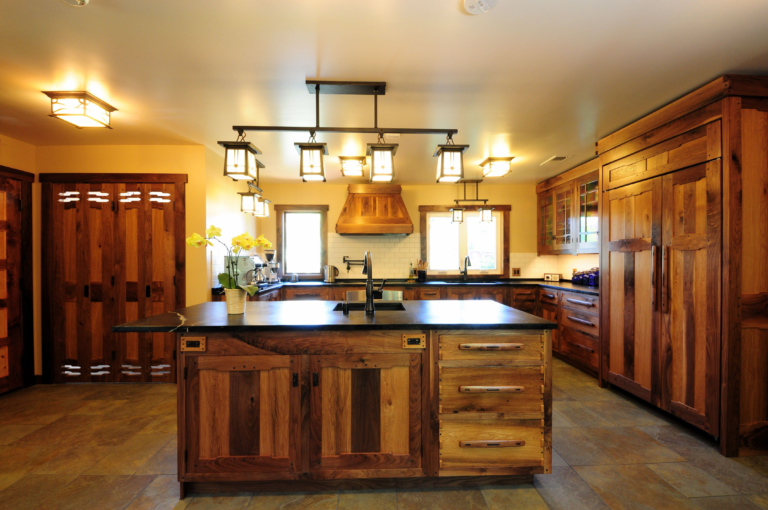Choosing the right kitchen lighting and fixtures is a critical step in the renovation process that can dramatically enhance the functionality and aesthetic of your kitchen. Whether you’re cooking a family meal, entertaining guests, or enjoying a quiet breakfast, the right lighting sets the mood and makes tasks easier. At Chicago Kitchen Renovation, we understand the intricacies involved in selecting the perfect lighting solutions, and we’re here to guide you every step of the way.
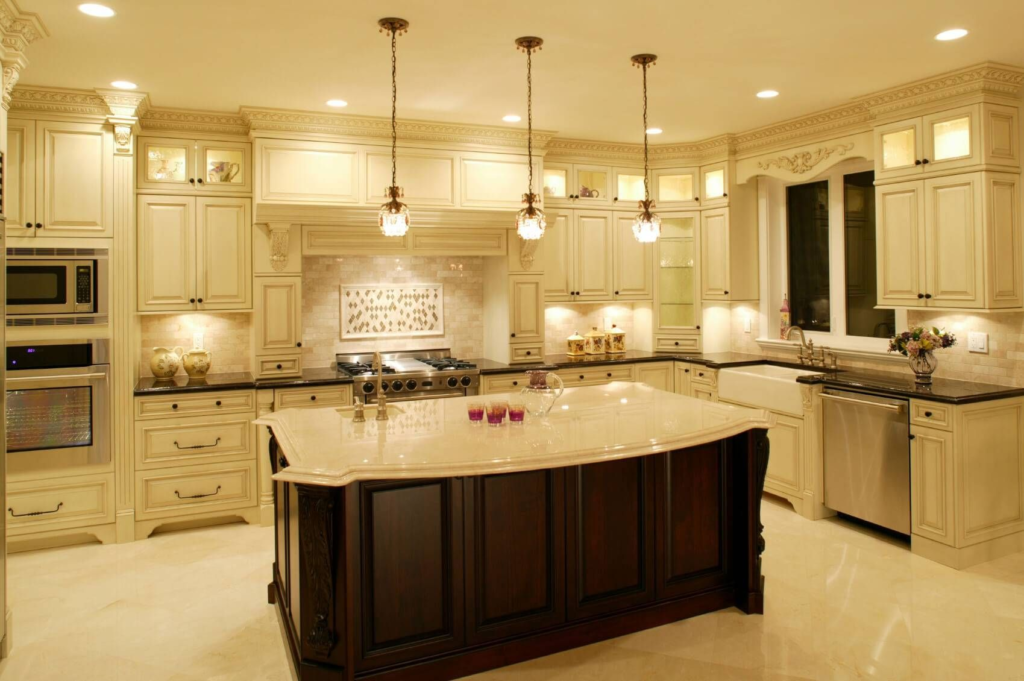
Understanding the Basics of Kitchen Lighting
Effective kitchen lighting and fixtures is about more than just brightening up a room. It involves a strategic combination of various types of lighting to create a well-lit, functional, and inviting space.
Types of Lighting
- Ambient Lighting: This is the general lighting that illuminates the entire room. It can be achieved through ceiling fixtures, chandeliers, or recessed lighting.
- Task Lighting: Essential for areas where specific activities like chopping vegetables or reading recipes occur. Under-cabinet lights and pendant lights are popular choices.
- Accent Lighting: Used to highlight architectural features or decorative elements in your kitchen, such as cabinet lighting or toe kick lighting.
Importance of Layering
Layering different types of lighting ensures that your kitchen is not only functional but also aesthetically pleasing. Ambient lighting provides overall illumination, task lighting focuses on specific work areas, and accent lighting adds a touch of drama and style.
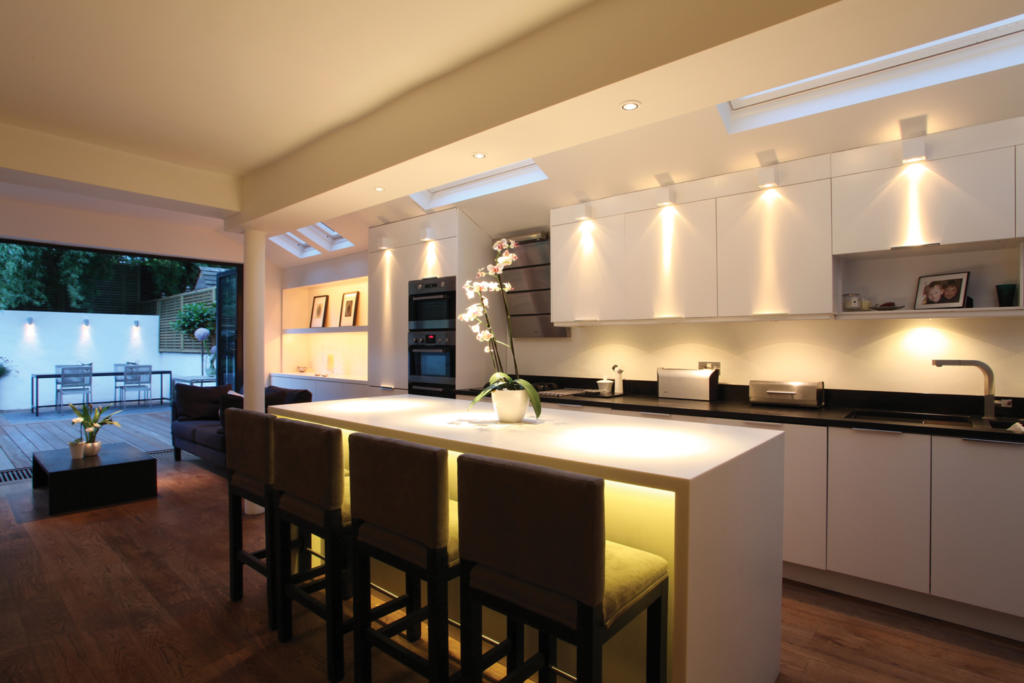
Assessing Your Kitchen’s Needs
Before diving into the various lighting options, it’s important to evaluate the specific needs of your kitchen.
➤ Kitchen Size and Layout
The size and layout of your kitchen play a crucial role in determining the type and amount of lighting required. A large, open kitchen will need more extensive lighting solutions compared to a small, compact one.
➤ Key Areas to Illuminate
- Cooking Areas: Ensure adequate lighting over stoves, ovens, and countertops.
- Countertops: Bright task lighting is essential for food preparation.
- Dining Areas: Pendant lights or chandeliers can create a warm, inviting atmosphere for dining.
➤ Kitchen Style and Theme
Consider the overall style and theme of your kitchen when choosing fixtures. Whether your kitchen is modern, rustic, or traditional, the lighting should complement and enhance the design.
Types of Kitchen Lighting Fixtures
1. Ambient Lighting Fixtures
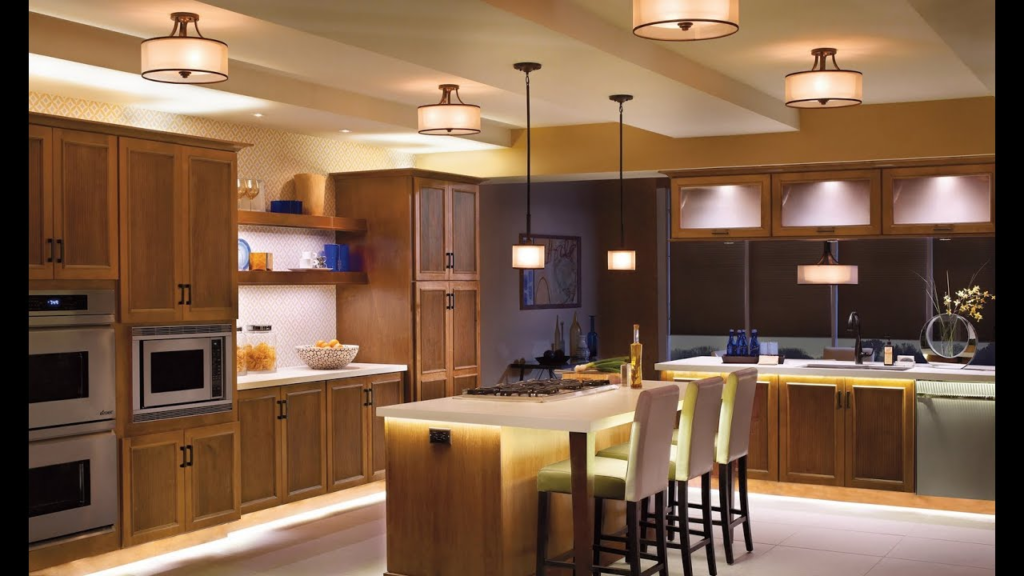
- Chandeliers: Add elegance and a focal point to your kitchen.
- Flush and Semi-Flush Mount Fixtures: Ideal for kitchens with low ceilings.
- Recessed Lighting: Provides unobtrusive, even lighting across the room.
2. Task Lighting Fixtures

- Under-Cabinet Lighting: Illuminates countertops and reduces shadows.
- Pendant Lights: Perfect for islands and peninsulas, adding both light and style.
- Track Lighting: Flexible and adjustable, suitable for directing light to different areas.
3. Accent Lighting Fixtures

- Cabinet and Drawer Lighting: Highlights interior contents and adds a luxurious touch.
- Toe Kick Lighting: Adds a subtle, modern glow along the base of your cabinets.
- Decorative Fixtures: Unique fixtures that double as art pieces can personalize your space.
Choosing the Right Bulbs
The type of bulbs you choose can affect the quality and efficiency of your kitchen lighting.
1. LED vs. Incandescent vs. Fluorescent
- LED Bulbs: Energy-efficient, long-lasting, and available in a range of colors and brightness levels.
- Incandescent Bulbs: Provide warm light but are less energy-efficient.
- Fluorescent Bulbs: Energy-efficient but often emit a cooler light, which may not be ideal for all kitchen styles.
2. Color Temperature
- Warm Light (2700K-3000K): Creates a cozy, inviting atmosphere.
- Cool Light (3500K-4100K): Provides bright, clear light ideal for task areas.
- Daylight (5000K-6500K): Mimics natural sunlight, great for overall brightness but can be harsh.
3. Energy Efficiency and Longevity
Opt for LED bulbs wherever possible for their energy efficiency and long lifespan, which can significantly reduce your electricity bills and the frequency of bulb replacements.
Design and Aesthetic Considerations
The right kitchen lighting and fixtures should enhance the beauty of your kitchen while ensuring functionality.
➤ Matching Fixtures with Your Kitchen’s Design
- Modern Kitchens: Opt for sleek, minimalist fixtures like linear pendants and recessed lights.
- Rustic Kitchens: Choose fixtures with natural materials like wood or wrought iron.
- Traditional Kitchens: Classic chandeliers and lantern-style pendants work well.
➤ Enhancing Kitchen Features
Use accent lighting to highlight your kitchen’s best features, such as a beautiful backsplash, an island, or open shelving.
➤ Coordinating Finishes and Materials
Ensure that your lighting fixtures complement other hardware and finishes in your kitchen, such as cabinet handles and faucets, to create a cohesive look.

Practical Tips for Installation and Maintenance
✦ Professional Installation vs. DIY
While some lighting projects can be done yourself, hiring a professional ensures safety and proper installation. Chicago Kitchen Renovation can provide expert installation services.
✦ Safety Tips
- Turn off the power before installing any fixtures.
- Follow manufacturer instructions carefully.
- Use appropriate tools and materials for installation.
✦ Maintenance Tips
- Regularly dust and clean your fixtures to maintain their appearance.
- Replace bulbs promptly to ensure consistent lighting.
- Check for any signs of wear or damage and address them immediately.
Budget Considerations
Lighting is an investment in your kitchen’s functionality and aesthetics. Setting a realistic budget helps in making informed choices without overspending.
Setting a Budget
Determine how much you are willing to spend on kitchen lighting and prioritize areas that need the most attention.
Balancing Quality and Cost
Invest in high-quality fixtures for areas that require durable and reliable lighting, and opt for more budget-friendly options in less critical areas.
Where to Invest and Where to Save
Spend more on task lighting and durable fixtures, and consider saving on decorative elements that can be easily updated later.
Trends in Kitchen Lighting and Fixtures
Current Popular Trends
- Smart Lighting: Use of smart bulbs and fixtures that can be controlled via smartphone apps or voice assistants.
- Industrial Style: Fixtures with a raw, unfinished look, often in metal finishes.
- Sustainable Lighting: Eco-friendly materials and energy-efficient designs.
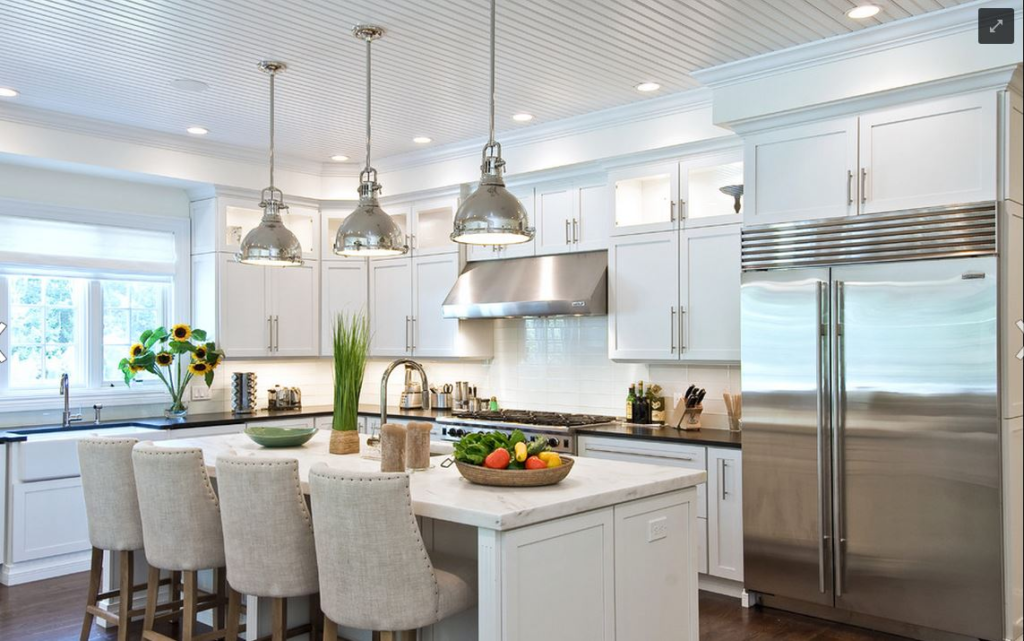
Innovative and Smart Solutions
- Smart Bulbs: Adjustable brightness and color temperature, and remote control capabilities.
- Motion Sensors: Automatically turn lights on and off, improving energy efficiency.
- Integrated Lighting Systems: Seamlessly integrate lighting with other smart home systems.
Conclusion
Choosing the right kitchen lighting and fixtures is a blend of understanding your needs, exploring various options, and integrating them into your kitchen’s design seamlessly. By considering factors like lighting types, bulb choices, design aesthetics, and budget, you can create a kitchen that is both functional and beautiful. We invite you to check out our Google My Business (GMB) profile to see reviews from our satisfied customers and examples of our completed projects. For expert advice and professional installation, contact Chicago Kitchen Renovation at (708) 289 – 5325 or email us at amg@amgproline.com. Let us help you illuminate your kitchen with the perfect lighting solutions.

